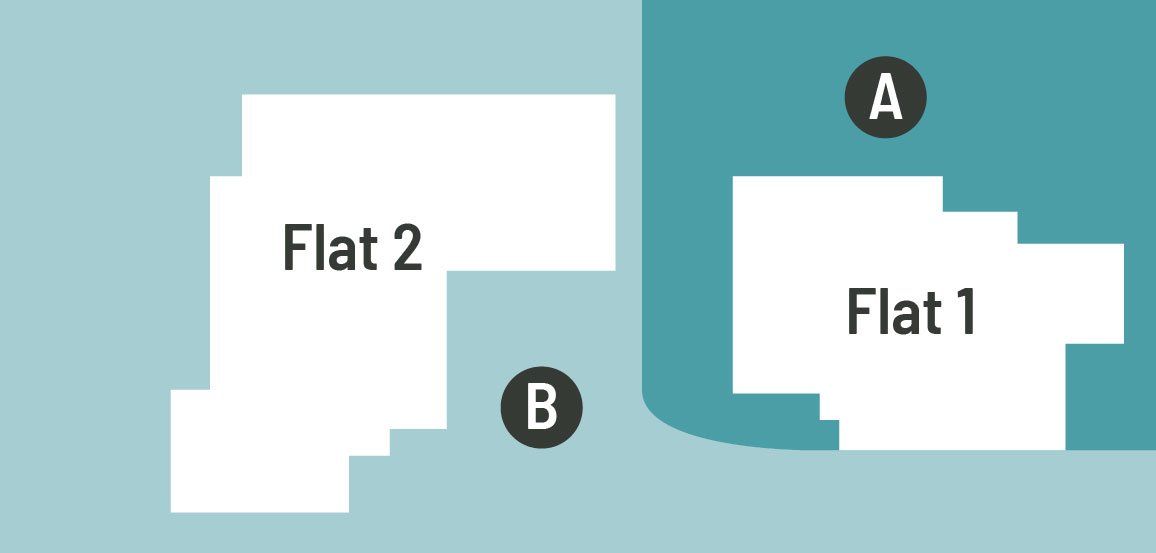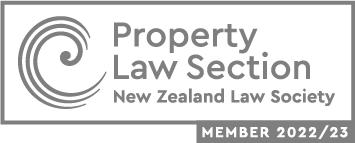Confusing Cross Leases
The New Zealand dream has always been to own your home on a quarter acre section. Even 50 years ago in Auckland, this was becoming out of reach for many people and subdividing that quarter acre section, into smaller more affordable sections, was restricted. However, a loophole existed. If you leased another building on your land (even if that lease was for 999 years), it was not considered a “subdivision” of land. This was the framework for the beginning of the infamous cross-lease title.
What is a cross lease
Under a cross lease, an owner owns two titles. They own an undivided share of the freehold land (or sometimes leasehold). They also own a leasehold interest in their “flat” and sometimes an exclusive use area for their outdoor garden. The two titles together form a composite title which is the cross-lease title. All the owners lease to each respective owner a leasehold interest in their respective building (or house) normally for 999 years. There is also a covenant that the lease needs to be sold along with the share of the freehold land (this binds the two titles together).
A cross lease became an effective way of subdividing the quarter acre section without actually subdividing. Nowadays under the Resource Management Act 1991, a cross lease is considered a “subdivision of land” and the use of cross-leases has been curtailed. However, due to the popularity of cross-leases in the 70s and 80s, there are still more than 200,000 cross-lease properties in New Zealand making them a common form of ownership.
Below is a helpful diagram of a two house cross lease. Under this example, Mr and Mrs Z own half the underlying land and Mr and Mrs X own the other half of the underlying land. Mr and Mrs Z lease Flat 1 and have exclusive use rights over area A from themselves and Mr and Mrs X as the landlords. Mr and Mrs X lease Flat 2 and have exclusive use rights over area B from themselves and Mr and Mrs Z, as landlords.

What issues do cross-leases present?
Cross-leases are fraught with issues. The most common issue relates to alterations and development. Generally there is a covenant in the cross-lease that prevents any alterations or renovations to the buildings without the consent of the lessor (i.e. the neighbours). If there is any animosity between the neighbours, this can make things difficult or even impossible for one owner to renovate their property. The standard clause says that consent to the alterations must not be unreasonably withheld. In Smallfield v Brown (1992) 2 NZ ConvC 191,110, there was a cross lease dispute over a minor addition of a deck where the cross-lease neighbour did not provide their consent. The High Court said the owner had not been unreasonable in withholding consent. It was held that consent would be unreasonably withheld, only where the benefit to the party seeking change would be substantial and the proposed alteration would produce only a trifling detriment to the neighbour.
Another common issue is where a cross lease property has already been developed (for example a conservatory has been added or a deck has been built). If the lessee did this without consent, and an amended flat’s plan has not been registered, it is possibly a defective title, which can create issues when it comes to selling the property.
Some cross-leases do not have properly defined “exclusive use areas” on the plan. Despite this, owners may have assumed certain areas as their own garden or outdoor BBQ area. Technically, if there is no exclusive use area on the lease, neighbours would be entitled to hang out on any area on the flat’s plan that is not formally leased, as it would be considered common property.
What can cross-lease owners do about their title?
If there is a defective cross lease title (for example if a conservatory has not been added to the flat’s plan) this can be remedied by registering a new flat plan on the title and a variation to the cross-leases. Obviously, this needs all the owners to be in agreement.
If all the owners are in agreement, it is also possible to convert the cross lease into separate freehold titles and effectively remove the cross lease. This can be an expensive process but might also add significant value to each owners’ title.
If cross-lease owners reach an impasse, they are likely to be restricted from taking Court action against the other(s) as the majority of cross leases have an arbitration clause. This means the dispute needs to be resolved by an independent arbitrator rather than the Court. The exception to this is where there are wrongly placed structures or if access is landlocked and relief is needed from the High Court under the Property Law Act 2007.
If you are buying or selling a cross-lease title or you have issues with your current cross-lease title, get in touch with us at Urlich Milne Lawyers about your options.
This article has been published for general information purposes only. It is not, nor is it intended to be, treated as legal advice.
Contributed by Oscar Ward - Associate Solicitor
PRIVACY POLICY
Click here to read Urlich Milne Lawyers Limited Privacy Policy
TERMS OF ENGAGEMENT
Click here to read and download Urlich Milne Lawyers Limited Client Care Standard Terms.
INFORMATION FOR CLIENTS
Click here to download and read Urlich Milne Lawyers Limited Client Care Information.
Click here to download Verification Forms
USEFUL LINKS

CONTACT US
Phone: +64 9 630 2727
Fax: +64 9 623 7413
Email: admin@uml.co.nz
3 Owens Road, Epsom, Auckland 1023,
New Zealand
Website Design by Rocket Design & Advertising
Website Development by Original Image


